Inclusion/Diversity
The books in this section help children to learn about the characteristics of autism and how to respect people’s differences. The stories also show how to include everyone by showing respect and recognizing that everyone can make contributions to classrooms, families, teams, and organizations.

A Book About What Autism Can Be Like
Author: Sue Adams (Mother of children with autism)
Grade Levels: Grades Kindergarten -5
Short Summary:
Chris and Andrew are very good friends, but sometimes Chris does things that Andrew doesn't understand. Chris can hear a fly buzzing when it's a mile away! But he doesn't like bright flashing lights like the ones on Andrew's favorite arcade game. Chris and Andrew have lots of fun together, but at times they laugh at completely different things-it doesn't matter though, because everyone is different, and being different can be rather cool! Chris and Andrew are here to help people understand the experiences of a child with autism, and how others can help by understanding how they are different and recognizing their many unique talents. This fully illustrated book is targeted at boys and girls aged 5+ and serves as an excellent starting point for family and classroom discussions.
Themes/Topics Covered:
- Autism
- Similarities and differences
- Diversity

A Friend Like Simon
Author: Kate Gaynot
Grade Levels: Preschool-2nd grade
Short Summary:
This is a special education children's picture book that introduces autism. When an autistic child joins a mainstream school, many children can find it difficult to understand and cope with a student that is somewhat ‘different’ to them. This story encourages other children to be mindful and patient of the differences that exist and to also appreciate the positive contribution that an autistic child can make to the group.
Themes/Topics Covered:
- Similarities and differences
- Diversity
- Inclusion
- Friendship
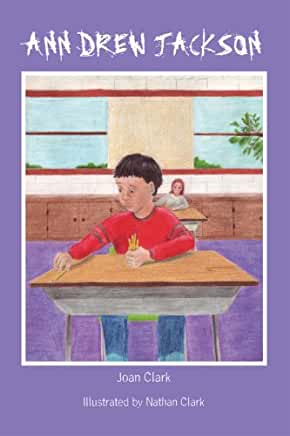
Ann Drew Jackson
Author: Joan Clark
Grade Levels: Grades 4-6
Short Summary:
Do your students need to understand their peers with autism a bit better? Joan Clark's sequel to her popular book, Jackson Whole Wyoming, reintroduces us to Jackson Thomas, a fifth-grade boy on the spectrum. This time, we find Jackson in a new school, with new classmates. Hillary Branson, a spunky, independent classmate of Jackson tells the story from her perspective as the classmate assigned to complete a science project with Jackson. Hillary has a serious attitude problem and tends to lie; therefore, it comes as no surprise that when assigned to work with Jackson, she rebels in any way she can. As the story unfolds, the reader begins to understand Hillary's background and delight in how she and Jackson discover they have a lot more in common than they ever realized.
Themes/Topics Covered:
- Autism
- Peers
- Changing schools
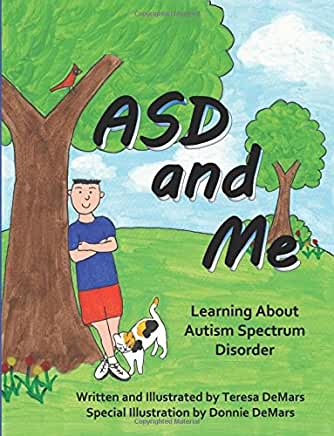
ASD and Me: Learning About Autism Spectrum Disorder
Author: Teresa DeMars (parent of a child with autism)
Grade Levels: Kindergarten-3rd grade
Short Summary:
Back in 2010, author Teresa DeMars went looking for a book to explain autism to her son. When she couldn’t find one that fit the characteristics of his autism, she wrote ASD and Me. Written for kids diagnosed with Asperger’s Syndrome, PDD-NOS, or autism, parents will appreciate the way this heartwarming children's picture book will help them explain Autism Spectrum Disorder (ASD) to their child on the spectrum. ASD and Me is written from the point of view of Eli, a seven-year-old boy who has ASD. Through the story, Eli explains how he was diagnosed, and how ASD affects the way he thinks and interprets the world around him. He also talks about some of the social and life skills he has learned that help him fit in with others. The story concludes with some of the interests and activities Eli shares with other children. ASD and Me is a great book to help introduce the subject of autism to siblings, classmates, extended family and to those on the spectrum. (Updated print version of the book may not be available from third party sellers.)
Themes/Topics Covered:
- Autism
- Sibling/family
Supplemental Resources:
- Activities based on Eli’s interests are provided in the book

Autismo... ¿qué es eso? (Spanish Edition)
Author: Ymkje Widerman-van der Laan and Rob Feldman
Grade Levels: 10- 12 years
Short Summary:
En este libro para niños autistas, Logan escucha a su abuela decirle a su amigo que tiene autismo y él le pregunta: "Autismo… ¿qué es eso?" Ella le explica qué es el autismo para él en esta historia bellamente ilustrada. Los niños con autismo enfrentan muchos desafíos y, a menudo, son conscientes de su autismo y lo cuestionan. Por supuesto, cada niño es único y es posible que desee o no explicar el término autismo a su hijo a una edad temprana. Pero si lo hace, este libro puede ayudarlo a que sea más fácil para usted, como lo hizo con el autor cuando le explicó el autismo a Logan. Su mente inquisitiva quería saber, y una vez que leyó esta historia, incluso antes de que fuera ilustrada, se sintió feliz con esta explicación positiva y la respuesta a su pregunta.
Themes/Topics Covered:
- familias
- autismo
- auto-aceptación
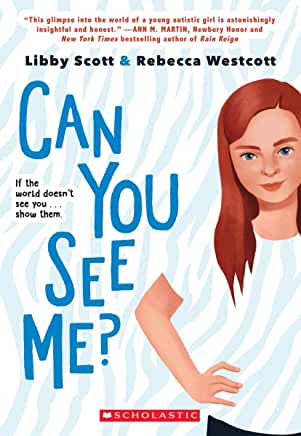
Can You See Me?
Author: Libby Scott (autistic) and Rebecca Westcott
Grade Levels: 3-6 grade
Short Summary:
Things Tally is dreading about sixth grade:
- Being in classes without her best friends
- New (scratchy) uniforms
- Hiding her autism
Tally isn't ashamed of being autistic -- even if it complicates life sometimes, it's part of who she is. But this is her first year at Kingswood Academy, and her best friend, Layla, is the only one who knows. And while a lot of other people are uncomfortable around Tally, Layla has never been one of them…until now.
Something is different about sixth grade, and Tally now feels like she has to act "normal." But as Tally hides her true self, she starts to wonder what "normal" means after all and whether fitting in is really what matters most.
Inspired by young coauthor Libby Scott's own experiences with autism, this is an honest and moving middle-school story of friends, family, and finding one's place.
Themes/Topics Covered:
- Autism
- Self-awareness
- Empathy
- Middle school
- Masking
Supplemental Resources:

Decibella
Author: Julia Cook
Grade Levels: 4-7 years
Short Summary:
She loves using her loud voice so much, everyone calls her "Decibella!" But that's not a nickname to brag about. Isabella's so loud, she interrupts class and irritates others. She doesn't know how or when to use a softer, quieter voice until her teacher introduces the "five volume" of voice - 6-inch, Whisper, Table-Talk, Strong Speaker, and Outside. Learning how and when to use each voice is made a lot more fun when Isabella is told to practice by saying aloud the word "Slurpadoodle!"
Award-winning author Julia Cook's creative storytelling, coupled with eye-pleasing illustrations, help K through 6 readers learn and remember what voice volume to use when speaking in class, chatting in the library, sitting at the lunch table, or playing outside.
Themes/Topics Covered:
- Autism
- Behavior Management
- Self-Control
- Friendship
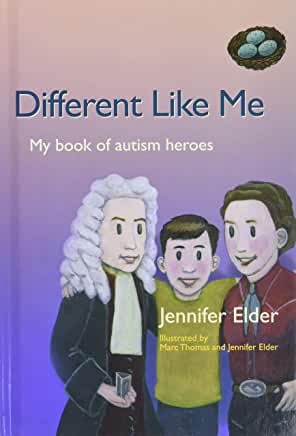
Different Like Me: My Book of Autism Heroes
Author: Jennifer Elder (mother of autistic son)
Grade Levels: Grades 3-7
Short Summary:
Different Like Me introduces children aged 8 to 12 years to famous, inspirational figures from the world of science, art, math, literature, philosophy and comedy.
Eight-year-old Quinn, a young boy with Asperger's Syndrome, tells young readers about the achievements and characteristics of his autism heroes, from Albert Einstein, Dian Fossey and Wassily Kandinsky to Lewis Carroll, Benjamin Banneker and Julia Bowman Robinson, among others. All excel in different fields but are united by the fact that they often found it difficult to fit in-just like Quinn.
Fully illustrated in color and written in child-friendly language, this book will be a wonderful resource for children, particularly children with autism, their parents, teachers, carers and siblings.
Themes/Topics Covered:
- Diversity
- Intelligence
- Peers
- Friendship

I am an Aspie Girl: A Book for Young Girls with Autism Spectrum Conditions
Author: Danuta Bulhak-Paterson (Author), Teresa Ferguson (Illustrator)
Grade Levels: 3rd-5th grades
Short Summary:
Lizzie is an Aspie Girl - she has Asperger's Syndrome, which means that her brain works differently to her friends, and even to boys with Asperger Syndrome. In this book, Lizzie explains what it's like to be an Aspie Girl, including how she has a special talent for blending in with her friends, how she gets really tired after being at school all day, how she worries about making mistakes, and how she finds it hard to understand how she is feeling.
By simply, clearly and positively explaining the social differences associated with Asperger's Syndrome, or Autism Spectrum Disorder, in young girls, this book will help Aspie Girls aged 5-11 to understand their diagnosis, recognize their unique strengths and celebrate their differences, and find ways of coping with difficulties. This positive and celebratory book also contains helpful discussion points for parents and professionals to explore further with the girls in their care.
Themes/Topics Covered:
- Autism and girls
- Social differences
- Masking
- Feelings
Supplemental Resources:

I Am Autism “in the classroom”
Author: Blake Carter Desiree
Grade Levels: ?
Short Summary:
Blake is a wonderful kid. He has both autism and ADHD and it makes daily life a whole lot different. The students in his class often don’t understand why he acts the way he does. Follow along with Blake as his classmates learn about his differences and finally begin to understand him, becoming one big classroom family.
Themes/Topics Covered:
- Autism
- ADHD
- Differences
- Friendship

Lucas tiene Superpoderes: un cuento sobre el autismo
Author: Ana Luengo
Grade Levels: Ages 6-10
Short Summary:
"Lucas tiene Superpoderes" (Ediciones DeFǎbula S.C.P), released in Spain, was inspired by Luengo's 11-year-old son Niklas, who is autistic, and her 9-year-old daughter Milena, who is not. Translated, the title means "Lucas has superpowers." The book targets readers ages 6 to 10.
The story is told through the eyes of 8-year-old Pablo, the oldest of six cousins who gather at their grandmother's home for her 70th birthday celebration. It's the first time the whole family has gathered since Pablo's cousin Lucas, now 4, was an infant. As they observe his behavior, the cousins try to understand why Lucas behaves the way he does. Lucas's mother explains that Lucas is autistic and that some situations are difficult for children with autism.
Themes/Topics Covered:
- Autism
- Family perspective
- sensory

MI Hermano Es Especial Mi Hermano Tiene Autismo: Un Cuento Acerca de Aceptacion
Author: Marta Schmidt-Mendez
Grade Levels: 5-6 years age
Short Summary:
Mi Hermano es Especial, Mi Hermano Tiene Autismo narra la historia del deseo de una niña de tener un hermano. La historia cubre la anticipación que siente una hermana mayor al prepararse para su nuevo papel en la familia. Mi Hermano es Especial, Mi Hermano Tiene Autismo refleja el recorrido de una familia cuando se da cuenta que su gran esperado pequeño está cambiando del alegre niño que ellos conocían a un niño introvertido y menos comunicativo. Esta historia, vista a través de los ojos de una hermana mayor, expresa la confusión y el dolor que una familia siente cuando se enfrenta con un diagnóstico de autismo. La historia también enseña la belleza de aceptar a una persona aunque esa persona sea diferente y demuestra que a veces un sueño no termina, sino que necesita ajustes. Un diagnóstico de autismo tiene impacto en todos los miembros de una familia. Los adultos tienen la oportunidad de hablar con profesionales, explorar el internet y hablar con otras personas en situaciones similares. Los niños tienen menos opciones. Es aterrante para ellos ver a los adultos en su vida en angustia, sin entender el porqué. Este libro ha sido escrito para los niños impactado por el diagnostico de autismo de alguien en su familia. La esperanza del autor es que este libro asista a los padres, maestros y cualquier otro adulto, a ayudar a niños enfrentar esta situación.
Themes/Topics Covered:
- Autism
- Sibling perspective

Mi Hermano Luca
Author: Catalina Serna
Grade Levels: Pre-K to 5th grade
Short Summary:
Eugenia tiene un hermano que se llama Luca, juntos se divierten mucho, aunque a veces él prefiera estar solo. Ella nos cuenta sobre sus cualidades y todo lo que lo hace único y especial. ¿Lo quieres conocer? Este libro nos ayuda a identificar algunas de las características más comunes del autismo y así trabajar juntos hacia un mundo más inclusivo.
Themes/Topics Covered:
- Family perspective
- Sensory
- Special interest
Supplemental Resources:
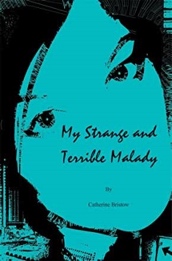
My Strange and Terrible Malady
Author: Catherine Bristow
Grade Levels: 3-7 grade
Short Summary:
Ronita Ronnie Baker, 11th-grade individualist, is not happy. School is a struggle, and now doctors just diagnosed her with Asperger Syndrome. It s hard enough being the misfit daughter of a perfect mother, let alone being diagnosed with a disorder no one understands. My Strange and Terrible Malady takes a look at Asperger Syndrome from Ronnie s point of view. While she is clearly not socially savvy, things begin to change when she meets Hannah, a fellow student who takes the time to explain the mysteries of social interaction and other conundrums of daily life to Ronnie. With the help of Hannah and her new life coach, Ronnie shows readers that successful social and emotional interaction can be learned.
Themes/Topics Covered:
- Social relationships
- Emotional

Noah Chases the Wind
Author: Michelle Worthington
Grade Levels: Preschool-2nd grade
Short Summary:
Noah knew he was different. He could see things that others couldn't, like the patterns in the dust that floated down on sunbeams. Noah is different. He sees, hears, feels, and thinks in ways that other people don't always understand, and he asks a lot of questions along the way. Noah loves science, especially the weather. His books usually provide him with the answers he needs, until one day, there's one question they don't answer—and that is where Noah's windy adventure begins.
Filled with rich, sweeping illustrations, this picture book celebrates the inquisitive nature of all children, including those on the autism spectrum, who cannot stop asking a question until an answer has been unearthed.
The book contains a page of information for parents, caregivers, and educators about the importance of helping children feel good about their differences and know that being different is okay.
Themes/Topics Covered:
- Sensory
- Inclusion
- Special interest
- Theory of mind
Supplemental Resources:

Oliver Onion: The Onion Who Learns to Accept and Be Himself
Author: Dianne Murrell
Grade Levels: Grade level 1-2
Short Summary:
Readers and listeners who have delighted in Diane Murrell's earlier picture book, Tobin Learns to Make Friends, will welcome her latest book written for and addressing some of the major issues faced by all children, but particularly so by those with autism spectrum disorders. Oliver the Onion doesn't like himself. But when he decides to try on the "look" of a tempting-looking orange, he soon realizes that he cannot run away from who he is but should instead celebrate his uniqueness. Oliver Onion is written for 4- to 10-year-olds but the colorful illustrations and heartfelt message will appeal to children and adults alike. A discussion guide helps teachers and others engage children in thoughtful exploration of the book.
His sensitive and heart-warming story emphasizes the importance of a strong sense of self and self-acceptance the very foundation upon which our children must develop. A great story to prepare our children for the challenges in today's diverse society.
Themes/Topics Covered:
- Acceptance
- Friendship
Supplemental Resources:
- Students could journal “What makes me unique?” Create poems or draw a picture. “I like me because…”

Pedro’s Whale
Author: Paula Kluth and Patrick Schwartz Artist: Justin Canha (person with autism)
Grade Levels: Grades 1-2
Short Summary:
Based on the real-life event that inspired Paula Kluth and Patrick Schwarz's bestselling "Just Give Him the Whale!," this simple but powerful story introduces educators to one of the best, most effective inclusion strategies: using students' fascinations to help them learn.
Pedro, a young boy who loves whales more than anything, is heartbroken when he's told to put away his favorite toy whale on the first day of school. But then Pedro's teacher discovers the secret to helping him do his best work: not only giving him his whale, but also incorporating his special interest into the whole curriculum. Soon, Pedro's whale is helping all the children learn, as the teacher works whales into math lessons, storytime, simple science experiments, and more! Pedro's whale helps him make friends, too, as the other children start to share his special interest.
An ideal teaching tool, Pedro's Whale will inspire educators to harness their students' natural motivations. The engaging, full-color illustrations (by Justin Canha, a gifted artist on the autism spectrum) also make this book perfect for storytime, so all children can increase their sensitivity to peers with special needs and learning differences.
Everyone who reads Pedro's Whale will remember its eye-opening message: when you work with instead of against what students love, they feel safe, happy, and ready to learn. Used in tandem with "Just Give Him the Whale!," this enlightening story will help teachers maximize inclusion and ensure that students with and without disabilities reach their full potential.
Themes/Topics Covered:
- Special interest
- Inclusion
- Acceptance
Supplemental Resources:

Quinn at School
Author: Rick Warren
Grade Levels: Preschool-2 grade
Short Summary:
Mom's Choice Award Winner! Early diagnosis and early intervention are both important factors in the lifelong success of those diagnosed. Quinn at School: Relating, Connecting, and Responding at School - A Book for Children Ages 3-7 is based on vignettes that reflect the hardships (interacting with classmates, greeting teachers, playground politics, art class, library visits, etc.) preschool and kindergarten children with social challenges face each school day. Many children, not just those with an autism spectrum disorder, have difficulty initiating or sustaining social contact, and this highly visual picture book helps children do just that using examples from environments and situations they are familiar with. In addition to being used as a lap book, Quinn at School comes with a free CD that includes the book in a digital PDF format, which allows children to advance the pages on a computer, keeping them highly engaged and making the resource doubly effective. For classroom use, the digital format may be converted for use with a Mimio whiteboard or SMART notebook system. A fun poster is included, making this a perfect educational tool to help young children with ASD learn that school can be fun!
Themes/Topics Covered:
- Autism
- Friendship
- Social challenges
Supplemental Resources:
- Book comes with CD and poster
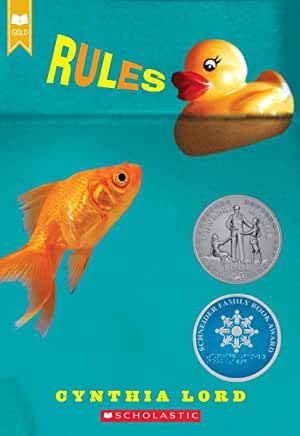
Rules
Author: Cynthia Lord (she has a son with autism)
Grade Levels: Grades 3-8
Short Summary:
Twelve-year-old Catherine just wants a normal life. Which is nearly impossible when you have a brother with autism and a family that revolves around his disability. She's spent years trying to teach David the rules, from "a peach is not a funny-looking apple" to "keep your pants on in public," in order to stop his embarrassing behaviors. But the summer Catherine meets Jason, a paraplegic boy, and Kristi, the next-door friend she's always wished for, it's her own shocking behavior that turns everything upside down and forces her to ask: What is normal?
Themes/Topics Covered:
- Friendship
- Honesty
- Acceptance
- Diversity
Supplemental Resources:

Russell’s World: A Story for Kids about Autism
Author: Charles A. Amenta III
Grade Levels: K-2
Short Summary:
Describes the daily life, likes and dislikes, and habits of Russell Amenta, who is a happy boy despite being severely autistic.
Themes/Topics Covered:
- Autism
Supplemental Resources:

Squirmy Wormy: How I Learned to Help Myself
Author: Lynda Farrington Wilson
Grade Levels: Kindergarten-4 grade
Short Summary:
Many kids have some form of SPD (Sensory Processing Disorder), but who can help them overcome their daily struggles? Wait . . . they can help themselves!
Lynda Farrington Wilson, along with Tyler and some delightful illustrations, help kids help themselves through daily life like no one has before with some great everyday tips and techniques.
Squirmy Wormy is a wonderful little children's book about a boy named Tyler, who has autism and SPD. Together with Tyler, the reader learns about SPD and what easy therapies he can do by himself to feel better. For instance: "I feel like running really fast, run run run! Maybe I just need a s-q-u-e-e-z-e between the couch cushions like a hot dog. Whew! I feel better."
Endorsed by Dr. Temple Grandin, this book is sure to help many children (who perhaps previously did not even know they had SPD) lead calmer, richer lives.
Themes/Topics Covered:
- Sensory processing disorder
- Sensory interventions
Supplemental Resources:
- Could include fidgets while reading the book to help students learn about sensory challenges

The Kaleidoscope Kid
Author: Elaine Marie Larson
Grade Levels: Preschool-4 grade
Short Summary:
The Kaleidoscope Kid is written for children with Asperger Syndrome and high-functioning autism to remind them of their many special gifts. Children on the autism spectrum possess a kaleidoscope of intellectual strengths and unique personality traits. Their outlook and creative ways are as variable and colorful as the view through a kaleidoscope. Written in light verse and illustrated in bold, colorful and entertaining illustrations, The Kaleidoscope Kid draws the reader to the book with the colorful, bold design of its cover. The interesting illustrations inside provide a vivid backdrop for the poetry. The book touches on subjects familiar and dear to children including pets and friends and a few of kids favorite things like dinosaurs, holidays, and summer vacations. The reader is reminded that those with Aspergers syndrome and high-functioning autism can proudly acknowledge to themselves that they are excellent, special and one-of-a-kind individuals. They are usually truthful, helpful and dependable. The book is an expansion on Elaine Marie Larson s first book, I Am Utterly Unique, an ABC book on the positive traits exhibited by children on the autism spectrum for children ages 4-10. The Kaleidoscope Kid can be enjoyed by children in this younger group, but entertains and educates readers of all ages through light verse.
Themes/Topics Covered:
- Autism
- Special interests
- Pets
- Friends
- Holidays
- Summer vacations
Supplemental Resources:
- May want to start with the book I Am Utterly Unique
- Have students write poems about their own special interest

Trevor Trevor
Author: Diane Twachtman-Cullen
Grade Levels: 1-3 grade
Short Summary:
Trevor has impressive skills, however it is not his strengths but rather his differences that are noticed by his classmates. This book tells the story of how Trevor's different skills are recognized by his caring and thoughtful teacher, and how she enables the other children to see things from a different perspective so that Trevor is no longer lonely and isolated.
Trevor Trevor tells the story of a young boy whose characteristics and problems in social relationships suggest a form of autism or other type of pervasive developmental disorder. It uses the form of metaphor to tell the story and is designed to be read to children by adults. It encourages young children to see things from a different perspective so that they may become more sensitive to the important roles which they play in the lives of their classmates with differences.
Themes/Topics Covered:
- Differences
- Perspectives
- Autism

Trey the Chef: Cooking Camp (The Heroes We Know)
Author: Keira Parris-Moore
Grade Levels: Preschool-2nd grade
Short Summary:
This little boy has big talent in the kitchen. But will loud noises and bustling classes test his limits… or see him soar?
Trey is so ready to whip up something delicious. Starting his first day at cooking camp, the young autistic chef looks forward to learning more about his most favorite thing in the world. But as soon as he gets there, he struggles to contain his overwhelming anxiety when he confronts the oversized crowd and chaos that ensues.
Scared it’s all becoming more than he can handle, Trey can’t stop his nervous emotions from spiraling out of control. But when someone kind steps in to help him, the determined youngster’s huge “Oh, no!” moment might turn into something oh-so right.
Can Trey overcome the challenges and show off his tasty skills?
In this delightful offering featuring a hero facing developmental obstacles, kids will learn to celebrate the unique gifts and abilities of their peers. From discovering compassion to appreciating each other’s differences, children can develop emotional intelligence while being inspired to nurture individual strengths. Fun recipes and important resources are included for families impacted by autism.
Themes/Topics Covered:
- Autism
- Differences
- Special Interests
Supplemental Resources:
- Fun recipes and important resources are included in the book for families living with autism
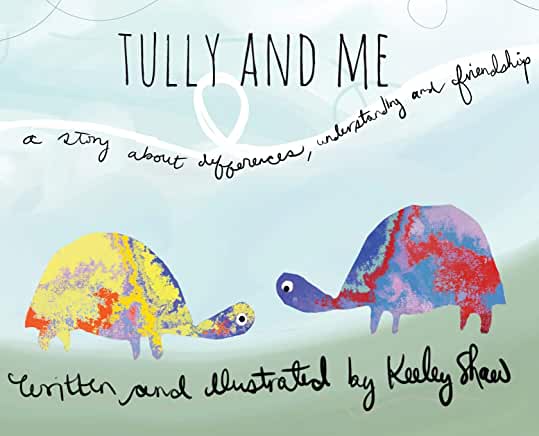
Tully and Me: A Story about Differences, Understanding and Friendship
Author: Keeley Shaw
Grade Levels: Preschool-6th grade
Short Summary:
"A smile feels the same on the inside."Tully and Me explores a friendship built on differences and understanding. Tully represents an individual affected by Autism Spectrum Disorder. The unique characteristics associated with Autism are portrayed including an affinity for counting and order, and a love for visual stimulation. Whimsical watercolor illustrations help to showcase a unique friendship that is nurtured through adversity and understanding. Tully and Me explores a world where our differences and the universal language of a smile bring us together. Everyone who enjoyed The Dot by Peter Reynolds, We're amazing 1,2,3 by Leslie Kimmelman and Marybeth Nelson, and I'm Like You, You're Like Me by Cindy Gainer will enjoy this read as well! This book is an excellent teaching tool for lessons on diversity, Autism, individuals with special needs, and accepting and curating friendships with people who are different. As well, it is a beautiful story for families to share. This picture book is appropriate for children and adults of all ages.
Themes/Topics Covered:
- Diversity
- Friendship
- Autism
- Special needs
Supplemental Resources:

Understanding Sam and Asperger Syndrome
Author: Clarabelle Van Niekerk
Grade Levels: Kindergarten –2 grade
Short Summary:
Answering the question Why is Sam different?, this heartwarming story tells of the challenges of living with Asperger Syndrome, a form of autism. This firsthand view of the life of an undiagnosed child presents behaviors and characteristics that are common among children with this disorder. Sam doesn't like his pancakes to touch, his sister is annoyed with his repetitive song, and his new coat hurts his skin, but once he is diagnosed, teamwork-based support helps Sam's life become a little easier. With endearing illustrations, the book includes 10 helpful tips geared toward children, showing them how to respect and accept differences as well as to interact with a classmate or friend with Asperger Syndrome.
Themes/Topics Covered:
- Autism
- Sensory
- Differences
Supplemental Resources:
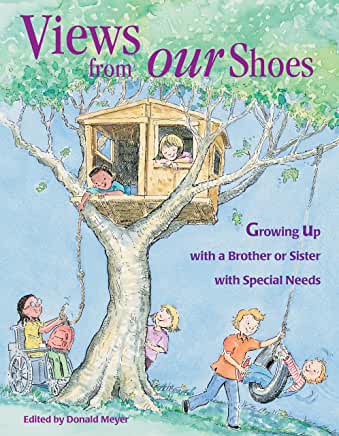
Views From Our Shoes: Growing Up with a Brother or Sister with Special Needs
Author: Donald Joseph Myer
Grade Levels: 4-9th grade
Short Summary:
In Views From Our Shoes, 45 siblings share their experiences as the brother or sister of someone with a disability. The children whose essays are featured here range from four to eighteen and are the siblings of youngsters with a variety of special needs, including autism, cerebral palsy, developmental delays, ADD, hydrocephalus, visual and hearing impairments, Down and Tourette syndromes.
Their personal tales introduce young siblings to others like them, perhaps for the first time, and allow them to compare experiences. A glossary of disabilities provides easy-to-understand definitions of many of the conditions mentioned.
Themes/Topics Covered:
- Disability
- Siblings
- Acceptance

Voices are Not for Yelling
Author: Elizabeth Verdick
Grade Levels: 4-7 years
Short Summary:
As parents and teachers know, yelling comes naturally to children. This friendly, encouraging book, geared to preschool and primary children, introduces and reinforces where and when to use an “indoor voice” or an “outdoor voice.” In classic Best Behavior style the author tells young readers, “Your voice is a powerful tool. How you use it is up to you.” Vivid illustrations show the times and places for an indoor voice, the ways people ask us to quiet our voices, and times when yelling might occur. “What happens if you’re mad or frustrated or really, really excited? Your voice gets louder and LOUDER.” But yelling hurts people’s ears and feelings. Children learn that they can quiet their voice and use their words to talk about a problem. “Think before you yell, and use your words well!” Includes a special section for parents and caregivers with activities and discussion starters.
Themes/Topics Covered:
- Autism
- Friendship
- Acceptance
Supplemental Resources:

We’re Amazing 1, 2, 3! (Sesame Street)
Author: Leslie Kimmelman
Grade Levels: Preschool-3rd grade
Short Summary:
This story stars Elmo, Abby, and their friend Julia, who has autism. Together, the three pals have a delightful playdate.
Themes/Topics Covered:
- Autism
- Friendship
- Sensory
Supplemental Resources:

Why Does Izzy Cover Her Ears?
Author: Jennifer Veenendall
Grade Levels: Preschool-2nd grade
Short Summary:
Meet Izzy, a feisty first grader, whose behavior is often misunderstood as she tries to cope with sensory overload in her new surroundings. This brightly illustrated book creates an environment that is accepting of students with sensory modulation difficulties, including many on the autism spectrum. It's a great resource for occupational therapists, teachers, and parents to share with children. Resources for adults at the end of the book include definitions of sensory processing and sensory modulation disorder, suggested discussion questions, and lists of related books and websites.
Themes/Topics Covered:
- Autism
- Sensory
- Behaviors
- Friendship
- Acceptance
Supplemental Resources: